
The Elder Scrolls series from Bethesda Softworks began in 1994 with the release of the first game in the series, Arena. The series is largely set on the fantasy world of Nim, on the continent of Tamriel, with some excursions to other dimensions, and is a role playing game. Magic is a common element of the series, although players tend not to be limited to the pure types of classes, such as fighters, mages or thieves, often seen in pen and paper role playing games. The main series games are all played from a first person viewpoint.
The Elder Scrolls feature a lot of open ended role playing, with no overall fixed order in which the player must complete some of the games content, although quests, especially sub-quests of a major quest, will require the completion of component parts before the next stage can be started.
In-game books are a common component of the series, which, as well as sometimes providing training, also provide background to the world the series is set in, and the events of earlier games in the series may be found in books in later games. The game world itself is extensively detailed, with a lot of history and legends.
The Elder Scrolls
The Elder Scrolls: Arena

Arena was the first game in the Elder Scrolls series and was released in 1994. The Emperor Uriel Septim VII has been betrayed by the Imperial Battlemage, Jagar Tharn, and imprisoned in a realm of Tharn's own creation. Jagar Tharn then ruled the Empire for a decade, using illusion magic to appear as the emperor, in the period known as the Imperial Simulacrum.
The object of the game is to travel all over the Empire, collecting the eight pieces of the Staff of Chaos that Jagar Tharn broke and scattered across the Empire, with the guidance of the former apprentice of Jagar Tharn, Ria Silmane.
The original concept of Arena was that of a gladiatorial game, hence the name Arena, but this was gradually changed to be more role playing in design during development, and the gladiator-style game was never actually coded.
Of all the games in the Elder Scrolls series, Arena has probably the most linear storyline, but there are still a number of random quests in addition to the main quest that can be completed.
The events of Arena are referred to in the book series "The Real Barenziah" that can be found in the sequels, although the Daggerfall version of the series differed from those found in later games. The date that the events occurred is 399 of the Third Era.
After Arena's 10th anniversary in 2004, Arena has been available for free. The official game and patches are available from Bethesda, with both the 1.06 floppy disc release and the 1.07 CD release with the cut scene audio. Playing this version of the game may require the use of an emulator, such as DOSBox, on newer systems.
The Elder Scrolls II: Daggerfall

The second game in the series, released in 1996, Daggerfall is set in the provinces of High Rock and Hammerfell. Uriel Septim VII enlists the player initially to exorcise the spirit of the King of Daggerfall.
Daggerfall is the capital of the Breton province of High Rock. The player travels around High Rock and Hammerfell, finding the King's murderer, and freeing the King's spirit, as well as attempting to find a letter to the Emperor that has been lost. Depending on the player's actions in the game, there are several possible endings to the main quest.
As is typical with the Elder Scrolls games, there are also various optional side quests that can be done. The events in Daggerfall occurred in year 405 of the Third Era.
The number of non=player characters in Daggerfall and the game area is much, much bigger than in later games; however, the NPCs are much less detailed, and the map is randomly generated and also less detailed than is found in the later games. Daggerfall also increased the open-ended role playing concept, removing the more linear framework that was seen in Arena, as well as moving more to a role playing training system, where skills improved through use, rather than the experience point based system in Arena.
Daggerfall did not come with any official tools to mod the game, but users did develop their own tools in order to do so, and thus there is some user created content available.
Daggerfall was also made available for free in 2009, the 15th anniversary of the Elder Scrolls series. The official release and patches are available from Bethesda, and unofficial releases with all official and unofficial patches are available. The game also requires and emulator such as DOSBox, which is included in an unofficial release.
The Elder Scrolls III: Morrowind

Morrowind is the third game in the main Elder Scrolls series, and was released in 2002. Morrowind is once again set in Tamriel, in the province of Morrowind, on the island of Vvardenfell. The central plot and main quest of the game revolves around the reincarnation of a Dunmer (Dark Elf) hero, Indoril Nerevar, known as The Nerevarine (the player) and the defeat of the demigod Dagoth Ur and his followers, as foretold in the Morrowind Prophecy. The events of the Morrowind Prophecy take place in the year 427 of the Third Era.
Although there is a main quest, there are also a substantial number of other quests and quest series that can be done, which can alter how Non Player Characters behave towards the player, and doing some may preclude doing others.
Morrowind is even more open ended than either Arena or Daggerfall, and although the game has a main plot, this receives much less emphasis than in either Arena or Daggerfall. Completing the main quest does not end the game, though, as the player can still continue, completing other quests than the main plot that have not been done, or exploring various locations that are detailed but have no relevance to any of the quests, or playing user created quests.
Although there are far less NPCs and places to visit than in Daggerfall, those that there are included are far more detailed. Various guilds and factions, many of which can be joined, add more depth to the game, and can affect what the player is able to do or how NPCs will react to them.
At the beginning of the game, the player is guided to create their character through interactions with NPCs. Players can pick their race, gender and starsign, and either pick a class or have one assigned through answering various questions. All these can effect what the player is able to do and their abilities and statistics, and mistakes made can make the game more challenging to play.
Morrowind was released with The Elder Scrolls Construction Kit; an official game modding tool released by Bethesda which allows users to create and modify any aspect of the game, from graphics to quests, including such things as races, using plugins. Consequently, it is possible for a game of Morrowind to be vastly improved over the original 2002 release. Bethesda also released several official plugins.
Tribunal
Tribunal is the first expansion for Morrowind, and was released in 2002. Tribunal is set mainly in the capital of Morrowind, the city of Mournhold, which is on the mainland of Morrowind, rather than the island of Vvardenfell. The city itself can only be reached by teleportation.
After a Dark Brotherhood assassin attempts to kill the player, they travel to Mournhold to discover more about the Brotherhood. The Tribunal is the collective name for the three demigods worshipped by some of the Dunmer of Morrowind, and the main quest revolves around them.
As well as the main Tribunal quest, a number of smaller unconnected quests are also added by the expansion.
Tribunal also takes place in year 427 of the Third Era, although the events are, at least in theory, set after the conclusion of the main quest of the original game.
Bloodmoon
The second expansion for Morrowind, Bloodmoon was released in 2002, and is set on the island of Solstheim, rather than Vvardenfell, which is mostly inhabited by Nords rather than Dunmer, although the island is disputed by both races.
The theme of the main quest revolves around werewolves and lycanthropy, and it is possible for the player to become infected. Should this happen, the quests done as part of the main quest will alter, as playing as a werewolf requires different quests to those as a normal character.
As well as the werewolf quest, there is another major quest series done on behalf of the East Empire Company, in which the player helps establish a colony. There are two possible colonies to support, and as with the main Bloodmoon quest, there are different actions required depending on which colony is supported. As with the main game and Tribunal, there are also a number of unconnected quests to do.
Bloodmoon also takes place in year 427 of the Third Era.
The Elder Scrolls IV: Oblivion

Oblivion is the fourth game in the main Elder Scrolls series, and was released in 2006. The game is set in the Tamriel province of Cyrodiil, although there are some excursions to Oblivion.
The Oblivion Crisis takes place in the year 433 of the Third Era, and last year of that Era, with the ending of the crisis marking the end of that Era and the start of the Fourth Era. The crisis starts when the Emperor Uriel Septim VII's sons are assassinated, and then the Emperor himself whilst fleeing, by Mythic Dawn cultists, supporters of the Daedric Prince of Destruction Mehrunes Dagon, who was previously referenced in Morrowind.
Gates to the plane of Oblivion have opened, and Daedra start passing through into Tamriel, initially destroying the city of Kvatch. The object of the main quest is to find the last heir to the throne and defeat the head of the Mythic Dawn and stop Mehrunes Dagon from coming through into Tamriel. Again, as with Morrowind, there is no requirement for the player to start with this immediately.
There are a large number of other miscellaneous quests and quest series, notably those faction quests that can result in the player becoming the head of the Mages Guild, Thieves Guild, Fighters Guild, the Dark Brotherhood and champion of the Arena. There are also a substantial number of dungeons, ruins and places to explore that do not form part of any quest, and a number of Daedric quests to receive powerful Daedric artefacts.
The game continues with the open ended play seen in Morrowind, and the initial part of the game is based around the creation of a character, with the chance to choose races, starsigns, and class. Custom character classes may be created. NPCs now follow schedules, and some may be found in many different places. Arriving at shops outside of opening hours will mean that they are not open for business.
Oblivion was also released with an improved version The Elder Scrolls Construction Kit that was included with Morrowind, and again the community of users has created a vast range of unofficial plugins to enhance, expand and improve the game, some of which rival the games official expansions in size, as well as various patches to fix problems not sorted out by Bethesda in the official patches. Bethesda also released a number of official plugins as well as the two expansions.
The Knights of the Nine
This was the first expansion for Oblivion released, and was available in 2006. Like the main game, the Knights of the Nine is also set in the Cyrodiil province of Tamriel.
The Knights of the Nine expansion adds a specific quest series, rather than an entire new area as with other expansions. The object of the quest is to recover the relics - armour and weapons - of the Divine Crusader. These are then used to defeat the sorcerer-king Umaril, as well as refounding the Knights of the Nine in the process, as the head of the Knights.
The only quests added are those related to the main plot; there aren't any miscellaneous quests. Any new locations added are all used in the quest itself. There is nothing added to the game other than the quest; as such, the expansion resembles a very big plugin, like the official Mehrunes Razor Oblivion plugin, rather than the other Oblivion or Morrowind expansions.
This also takes place in the year 433 of the Third Era during the events of Oblivion.
A large user-created mod extends the Knights of the Nine storyline.
The Shivering Isles

The Shivering Isles is the second expansion for Oblivion, and was released in 2007. The expansion is not set in Cyrodiil like the main game or Knights of the Nine, but instead in the Shivering Isles, the plane of Oblivion ruled by the Daedric Prince of Madness, Sheogorath, and also takes place in the year 433 of the Third Era.
A portal has opened on an island in Niben Bay. Going through the portal, after swimming out to the island, will transport the player to Sheogorath's realm. The main quest requires the player to help Sheogorath prevent the destruction of the realm itself by the Daedric Prince of Order, Jyggalag.
The expansion adds a large new area, with new equipment, items, NPCs, monsters and locations. As well as the main quest, there are also a number of unconnected side quests that may also be done, and various locations unconnected to any quest that can be explored. This expansion is substantially bigger than the Knights of the Nine.
The Elder Scrolls V: Skyrim

Skyrim takes place in the year 201 of the Fourth Era, making it the first game in the main series not set during Uriel Septim VII's reign, or even in the Third Era, and is the fifth game in the Elder Scrolls series.
After the ending of the Septim dynasty in Oblivion, the Empire became much weakened. The capital was conquered by Titus Mede, who began a new dynasty. The provinces of Elsweyr, Black Marsh, the Summerset Isles and Valenwood secede from the Empire. The province of Skyrim, where the game is set, although still part of the Empire, wants to leave it also.
The main quest revolves around Dragons, in particular the Dragon god Alduin. The player may have to defeat many Dragons during the game, with the aim of finally meeting and destroying Alduin himself.
Once again, there are many side and faction quests, as well as locations unconnected to any particular quest.
Skyrim incorporates the new Radiant AI technology, which adds greater complexity to NPCs. NPCs are less rigidly programmed, and can interact with the world in a more unique fashion than seen in previous titles. Quests can also be dynamically altered by player's actions through the use of this, and the game is even more open-ended than its' predecessors.
The Elder Scrolls Construction Kit is now known as the Creation Kit, and also integrates with the Steam Workshop, allowing users to rate, download and share mods created with it. The modding community that has created mods for both Morrowind and Oblivion has also already created many mods, again fixing problems and adding depth to the game.
An Elder Scrolls Legend
Battlespire

Battlespire was released in 1997, and is the first and only game in the series, An Elder Scrolls Legend. It was initially planned to expand Daggerfall, but was eventually released as a standalone game. It is therefore probably set at the same time as Daggerfall.
The Battlespire itself is a training facility for Imperial Battlemages. Rather than being set in Tamriel, the Battlespire is located between Oblivion and Mundus. The player is an apprentice who, after being sent to the Battlespire, discovers that the place has been invaded by a Daedric army led by Mehrunes Dagon and most of the inhabitants killed.
The game involves the player travelling through the Battlespire, essentially just a single, huge dungeon, in order to find and defeat Mehrunes Dagon himself. It lacks the depth of other Elder Scrolls games, just being what is commonly called a dungeon crawl in traditional RPGs.
Battlespire can be played on Windows using an emulator, such as DOSBox, although the game is fairly resource intensive and may have problems even on fairly modern computers. The game was designed with a multiplayer online option which, although no longer supported by GameSpy Arcade, can still be played through Kali.
The Elder Scrolls Adventures
Redguard

Released in 1998, Redguard is the first, and to date only, game released in The Elder Scrolls Adventures series.
Redguard is set in the year 864 of the Second Era. The player plays the part of Cyrus, a Redguard who returns to the island of Stros M'Kai off the coast of Hammerfell, in search of his missing sister, Iszara. Redguard is in a third person style, rather than the first person of the main Elder Scrolls series.
Although the initial premise of the plot is simple, Cyrus quickly becomes involved in political machinations. After working his way through the various sub-quests, Cyrus must eventually defeat Lord Richton.
Redguard features a much more linear plot than is typical in Elder Scrolls games, rather than the usual more open-ended role playing. There are also less NPCs than can be seen in the main games.
Redguard can be run on Windows through an emulator such as DOSBox. No official patches were ever released by Bethesda for the game.
TES Travels
The Elder Scrolls: Travels is a series of mobile Elder Scrolls games, that work with Java enabled mobile phones, or the Nokia N-Gage. The Travels games are much more limited in size, graphics and sound than the normal games, due to the platforms they are published on. The games are also more linear in nature than the main series.
A fifth game, Oblivion for the Sony PSP, was planned but never released.
Stormhold

Stormhold was the first TES Travels game released in 2003. Set in Stormhold prison, in the province of Black Marsh, the player must kill the mad warden, Quintus Varus, and escape. Stormhold also featured in Elder Scrolls: Arena.
With the game designed to run on as many phones as possible, the actual size of the game varies depending on the mobile used, with the smallest having six classes and eight dungeons and the largest version having seven classes and thirty-six dungeons.
Dawnstar

Dawnstar is the second Travels games, and was released in 2004. The settlement of Dawnstar is on the northern coast of the province of Skyrim, and also featured in Elder Scrolls: Arena and Elder Scrolls V: Skyrim.
As with Stormhold, the game also came in a variety of sizes, with eight dungeons and six classes in the smallest to thirty-six dungeons and seven classes in the largest.
The game consists of one main quest, although a fairly extensive one. The final object of the quest is to stop an invasion of Dawnstar by various enemies, culminating in an attack by Gehenot Thriceborn.
Shadowkey

The third TES Travels game was released exclusively on the Nokia N-Gage in 2004. Shadowkey is set in the province of Hammerfell and Highrock, previously visited in the Elder Scrolls II: Daggerfall, although this time the provinces aren't randomly created., and Skyrim, also seen in the Elder Scrolls V: Skyrim as well as TES Travels: Dawnstar.
After finding the artefact known as the Shadowkey, the player is told by a prisoner that the player needs to stop an item, the Umbra' Keth, that is currently being created from falling into the hands of mages such as Jagar Tharn - who was seen in Elder Scrolls: Arena.
The player has to collect a number of items, the Star Teeth, to make the Umbra' Keth vulnerable, so it can be killed. The game is more extensive than the previous two TES Travels games, with nine character classes, eight races and a Bluetooth multiplayer option.
Oblivion Mobile

Oblivion Mobile, released in 2006, is a mobile version of the Elder Scrolls IV: Oblivion. Also set during the Oblivion Crisis and in Cyrodiil, the mobile version follows the main games storyline, although the game is of course substantially smaller.
The player has to accomplish the major quests of the main storyline, although some of the minor ones are not included. There are also four optional quests that can be done, for extra rewards.

The Elder Scrolls V: Skyrim Legendary Edition [Online Game Code]
Amazon Price: $39.99 $26.79
Buy Now
(price as of Aug 12, 2015)


 The Elder Scrolls series from Bethesda Softworks began in 1994 with the release of the first game in the series, Arena. The series is largely set on the fantasy world of Nim, on the continent of Tamriel, with some excursions to other dimensions, and is a role playing game. Magic is a common element of the series, although players tend not to be limited to the pure types of classes, such as fighters, mages or thieves, often seen in pen and paper role playing games. The main series games are all played from a first person viewpoint.
The Elder Scrolls series from Bethesda Softworks began in 1994 with the release of the first game in the series, Arena. The series is largely set on the fantasy world of Nim, on the continent of Tamriel, with some excursions to other dimensions, and is a role playing game. Magic is a common element of the series, although players tend not to be limited to the pure types of classes, such as fighters, mages or thieves, often seen in pen and paper role playing games. The main series games are all played from a first person viewpoint. Arena was the first game in the Elder Scrolls series and was released in 1994. The Emperor Uriel Septim VII has been betrayed by the Imperial Battlemage, Jagar Tharn, and imprisoned in a realm of Tharn's own creation. Jagar Tharn then ruled the Empire for a decade, using illusion magic to appear as the emperor, in the period known as the Imperial Simulacrum.
Arena was the first game in the Elder Scrolls series and was released in 1994. The Emperor Uriel Septim VII has been betrayed by the Imperial Battlemage, Jagar Tharn, and imprisoned in a realm of Tharn's own creation. Jagar Tharn then ruled the Empire for a decade, using illusion magic to appear as the emperor, in the period known as the Imperial Simulacrum. The second game in the series, released in 1996, Daggerfall is set in the provinces of High Rock and Hammerfell. Uriel Septim VII enlists the player initially to exorcise the spirit of the King of Daggerfall.
The second game in the series, released in 1996, Daggerfall is set in the provinces of High Rock and Hammerfell. Uriel Septim VII enlists the player initially to exorcise the spirit of the King of Daggerfall. Morrowind is the third game in the main Elder Scrolls series, and was released in 2002. Morrowind is once again set in Tamriel, in the province of Morrowind, on the island of Vvardenfell. The central plot and main quest of the game revolves around the reincarnation of a Dunmer (Dark Elf) hero, Indoril Nerevar, known as The Nerevarine (the player) and the defeat of the demigod Dagoth Ur and his followers, as foretold in the Morrowind Prophecy. The events of the Morrowind Prophecy take place in the year 427 of the Third Era.
Morrowind is the third game in the main Elder Scrolls series, and was released in 2002. Morrowind is once again set in Tamriel, in the province of Morrowind, on the island of Vvardenfell. The central plot and main quest of the game revolves around the reincarnation of a Dunmer (Dark Elf) hero, Indoril Nerevar, known as The Nerevarine (the player) and the defeat of the demigod Dagoth Ur and his followers, as foretold in the Morrowind Prophecy. The events of the Morrowind Prophecy take place in the year 427 of the Third Era. Tribunal is the first expansion for Morrowind, and was released in 2002. Tribunal is set mainly in the capital of Morrowind, the city of Mournhold, which is on the mainland of Morrowind, rather than the island of Vvardenfell. The city itself can only be reached by teleportation.
Tribunal is the first expansion for Morrowind, and was released in 2002. Tribunal is set mainly in the capital of Morrowind, the city of Mournhold, which is on the mainland of Morrowind, rather than the island of Vvardenfell. The city itself can only be reached by teleportation. The second expansion for Morrowind, Bloodmoon was released in 2002, and is set on the island of Solstheim, rather than Vvardenfell, which is mostly inhabited by Nords rather than Dunmer, although the island is disputed by both races.
The second expansion for Morrowind, Bloodmoon was released in 2002, and is set on the island of Solstheim, rather than Vvardenfell, which is mostly inhabited by Nords rather than Dunmer, although the island is disputed by both races. Oblivion is the fourth game in the main Elder Scrolls series, and was released in 2006. The game is set in the Tamriel province of Cyrodiil, although there are some excursions to Oblivion.
Oblivion is the fourth game in the main Elder Scrolls series, and was released in 2006. The game is set in the Tamriel province of Cyrodiil, although there are some excursions to Oblivion. This was the first expansion for Oblivion released, and was available in 2006. Like the main game, the Knights of the Nine is also set in the Cyrodiil province of Tamriel.
This was the first expansion for Oblivion released, and was available in 2006. Like the main game, the Knights of the Nine is also set in the Cyrodiil province of Tamriel. The Shivering Isles is the second expansion for Oblivion, and was released in 2007. The expansion is not set in Cyrodiil like the main game or Knights of the Nine, but instead in the Shivering Isles, the plane of Oblivion ruled by the Daedric Prince of Madness, Sheogorath, and also takes place in the year 433 of the Third Era.
The Shivering Isles is the second expansion for Oblivion, and was released in 2007. The expansion is not set in Cyrodiil like the main game or Knights of the Nine, but instead in the Shivering Isles, the plane of Oblivion ruled by the Daedric Prince of Madness, Sheogorath, and also takes place in the year 433 of the Third Era. Skyrim takes place in the year 201 of the Fourth Era, making it the first game in the main series not set during Uriel Septim VII's reign, or even in the Third Era, and is the fifth game in the Elder Scrolls series.
Skyrim takes place in the year 201 of the Fourth Era, making it the first game in the main series not set during Uriel Septim VII's reign, or even in the Third Era, and is the fifth game in the Elder Scrolls series. Battlespire was released in 1997, and is the first and only game in the series, An Elder Scrolls Legend. It was initially planned to expand Daggerfall, but was eventually released as a standalone game. It is therefore probably set at the same time as Daggerfall.
Battlespire was released in 1997, and is the first and only game in the series, An Elder Scrolls Legend. It was initially planned to expand Daggerfall, but was eventually released as a standalone game. It is therefore probably set at the same time as Daggerfall. Released in 1998, Redguard is the first, and to date only, game released in The Elder Scrolls Adventures series.
Released in 1998, Redguard is the first, and to date only, game released in The Elder Scrolls Adventures series.
 Dawnstar is the second Travels games, and was released in 2004. The settlement of Dawnstar is on the northern coast of the province of Skyrim, and also featured in Elder Scrolls: Arena and Elder Scrolls V: Skyrim.
Dawnstar is the second Travels games, and was released in 2004. The settlement of Dawnstar is on the northern coast of the province of Skyrim, and also featured in Elder Scrolls: Arena and Elder Scrolls V: Skyrim. The third TES Travels game was released exclusively on the Nokia N-Gage in 2004. Shadowkey is set in the province of Hammerfell and Highrock, previously visited in the Elder Scrolls II: Daggerfall, although this time the provinces aren't randomly created., and Skyrim, also seen in the Elder Scrolls V: Skyrim as well as TES Travels: Dawnstar.
The third TES Travels game was released exclusively on the Nokia N-Gage in 2004. Shadowkey is set in the province of Hammerfell and Highrock, previously visited in the Elder Scrolls II: Daggerfall, although this time the provinces aren't randomly created., and Skyrim, also seen in the Elder Scrolls V: Skyrim as well as TES Travels: Dawnstar. Oblivion Mobile, released in 2006, is a mobile version of the Elder Scrolls IV: Oblivion. Also set during the Oblivion Crisis and in Cyrodiil, the mobile version follows the main games storyline, although the game is of course substantially smaller.
Oblivion Mobile, released in 2006, is a mobile version of the Elder Scrolls IV: Oblivion. Also set during the Oblivion Crisis and in Cyrodiil, the mobile version follows the main games storyline, although the game is of course substantially smaller. The Elder Scrolls V: Skyrim Legendary Edition [Online Game Code]
The Elder Scrolls V: Skyrim Legendary Edition [Online Game Code]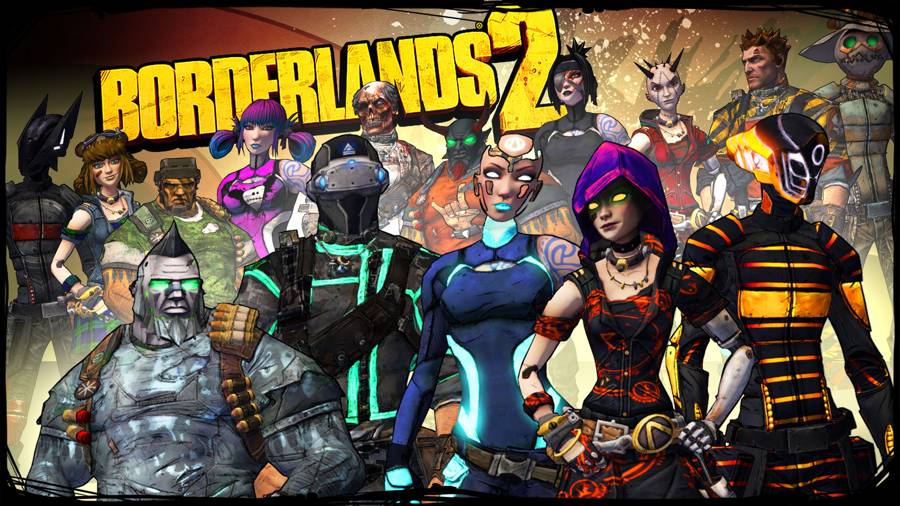

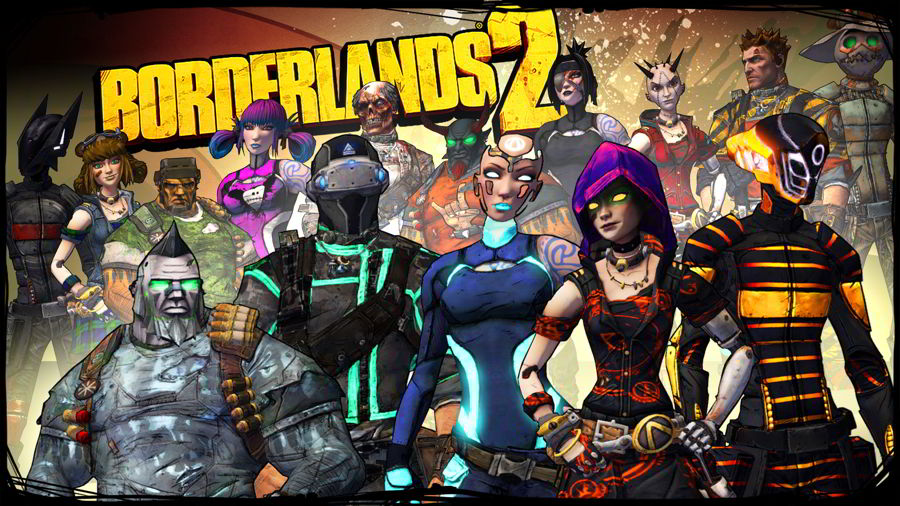
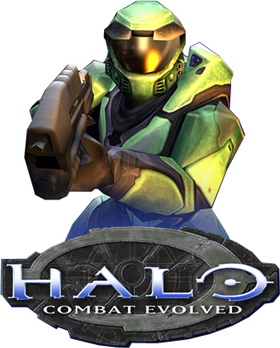
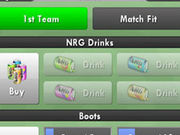 . Plays August 5, 2012
. Plays August 5, 2012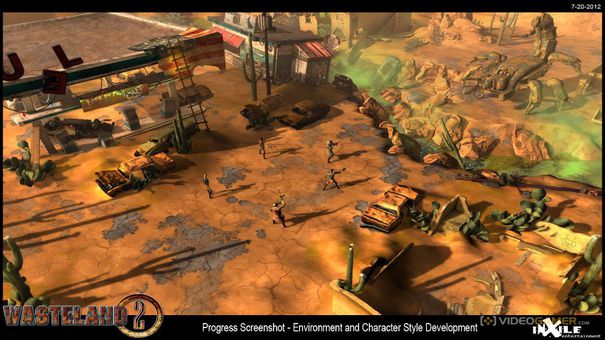 . Plays, 22nd September 2014
. Plays, 22nd September 2014 Star Wars Battlefront 2 Tweak Guide
Star Wars Battlefront 2 Tweak Guide Batman: Arkham Origins – Cyrus Pinkney Plaques Guide
Batman: Arkham Origins – Cyrus Pinkney Plaques Guide Walkthrough Metal Gear Solid 5: The Phantom Pain
Walkthrough Metal Gear Solid 5: The Phantom Pain